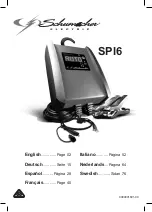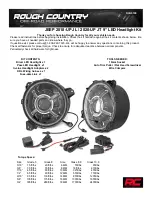
2. Lap the track in this manner until you start smelling
the brakes. Continue for another ½ lap at speed, then
do a two lap cool down with minimal brake applies.
Make sure the brakes are not smoking. If they are, do
another cool down lap.
3. Do not continue for more than 1 full burnishing lap
after you start smelling the brakes. Do not get them
smoking heavily. This will get them too hot and affect
their life negatively in future track use.
4. Allow vehicle to sit and cool in the paddock for at least
30 min. If an infrared thermal gun is available, allow
rotors to cool to 200°F (93.3°C) before going back out.
5. There should be a thin, ash layer when inspecting the
pads installed in the caliper. Having the ash layer go
more than half the thickness of the pad material
indicates too aggressive of a burnish.
6. Sometimes, a second burnish session is required. If the
pads start smelling in the next track session, reduce
speed and braking decel to burnish targets and follow
step 2-4.
7. New pads installed on old rotors still need to be
burnished. New rotors installed with old pads should
be burnished at the track or street driven for 300 city
miles to develop an adequate lining transfer layer on
the rotor surface prior to track use.
8. Rotors that pulsate during track use should be re-
placed. Resurfacing of the rotors is not recommended,
as it removes mass from the rotor, reducing its thermal
capacity. Resurfacing also thins the rotor cheek, mak-
ing it less robust and increasing the likelihood of
pulsation in further track use.
5
STARTING AND OPERATING
411
Summary of Contents for 2016 Challenger Hellcat
Page 4: ......
Page 7: ...1 INTRODUCTION 5 ...
Page 10: ......
Page 102: ......
Page 224: ......
Page 372: ......
Page 449: ...5 STARTING AND OPERATING 447 ...
Page 480: ......
Page 508: ......
Page 575: ...MAINTENANCE SCHEDULES CONTENTS 䡵 MAINTENANCE SCHEDULE 574 Maintenance Chart 576 8 ...
Page 598: ......
Page 599: ...INDEX 10 ...
















































